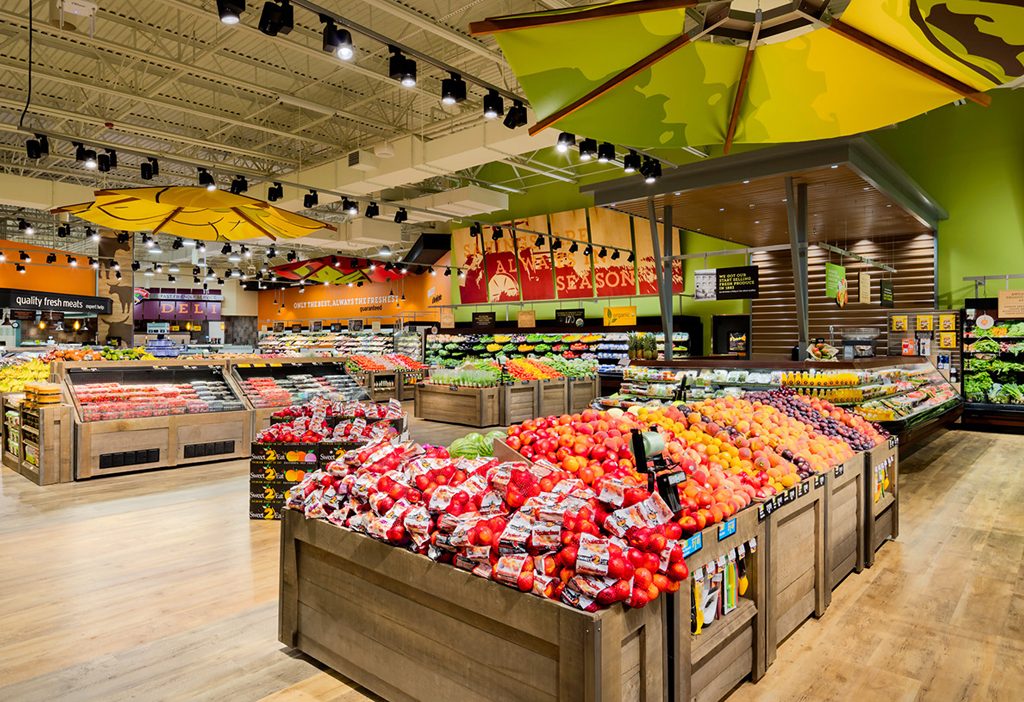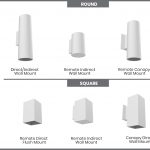Does Retail Lighting Really Help Sales? Three Examples Say Yes.
 American photographer Aaron Rose famously said: “In the right light, at the right time, everything is extraordinary.”
American photographer Aaron Rose famously said: “In the right light, at the right time, everything is extraordinary.”
Nothing better accentuates the importance of lighting for a retail store than Rose’s quote.
Lighting sets the stage in retail. How it’s angled, where it’s placed, it’s color temperature, its intensity and color rendering, even how it’s controlled—they all play make-or-break roles in whether shoppers stroll past certain merchandise or stop and reach for their wallets.
Consider, in a clothing store, how a garment’s lustrous colors and clear textures catch your eye, or in a grocery store, how hungry you feel when you wander past a dark red, freshly cut slab of meat inside a display case.
That is the buying power of lighting—and color.
But many other factors influence buying decisions, including pricing, the economy, a store’s location, its product reviews, consumer trends, and promotions–even the weather and local events.
Thus, the real question is, can a better lit and designed store really help move merchandise and increase transactions?
Studies suggest yes. Let’s have a look at three examples.
Gerry Weber: 12% Sales Increase Follows Lighting Retrofit
Gerry Weber, a German fashion retailer, added accent lighting and increased light levels from 450lx to 600lx in one of its stores after research found that their targeted shoppers tend to feel more comfortable under certain types of lights.
Shoppers were also fitted with sensors to monitor reactions, such as heart activity and brain waves when walking around the shop, both before and after the lighting upgrade.
The result: Sales increased an average of 12% compared to another local store.
Also, sensors showed that shoppers’ stress levels were lower after the retrofit, and customers stayed in some areas longer than before.
Dutch supermarket: LED-lit Portion of Store Out-Sales Non-LED Half
Here’s another example: Dutch co-operative supermarket group Plus lit half a store with newly installed LED lights. The other half was lit with traditional fluorescent lights. Sales on both sides were tracked for 21 weeks.
A tracking system was also installed inside shoppers’ grocery baskets to trace their shopping habits like how much time they spent in certain parts of the supermarket, their route around the store and which parts of the shop they were more drawn.
The result? The LED-lit portion of the store sold 2 percent more products per customer over the study period.
German grocery retailer: Combination of Colored Lights Bolsters Sales
Let’s look at one last example: Globus, a major grocery retailer in Germany, experimented with a combination of colored lights at a promotional area inside one of its stores. The goal was to see if certain color combination impacted sales and customer behavior more than others.
The study showed that the most effective setting for enticing shoppers was using spotlights with pastel-colored up-lights. This combo led to a 6% increase in sales of goods from the promotional area.
The same combination of colored lights increased customer visits by 15%.
The above examples underscore how LED technologies—specifically high CRI and full-gamut lighting fixtures, plus state-of-the-art controls for quick customization to changing products—contribute to the identity, comfort and visual quality of a retailer.
When a lighting design supports the retailer’s preferred image and works in collaboration with the store’s other design components to encourage sales, customers feel good and a retailer’s products look good.
And “just browsing” turns into the sound of a ringing cash register or the swipe of a credit card.
Want to learn more?
To learn more about how to revitalize your store and turn it into a destination where customers will see it in the best possible light, read: “How Retailers Attract Shoppers with Eye-Popping Clothes.”



